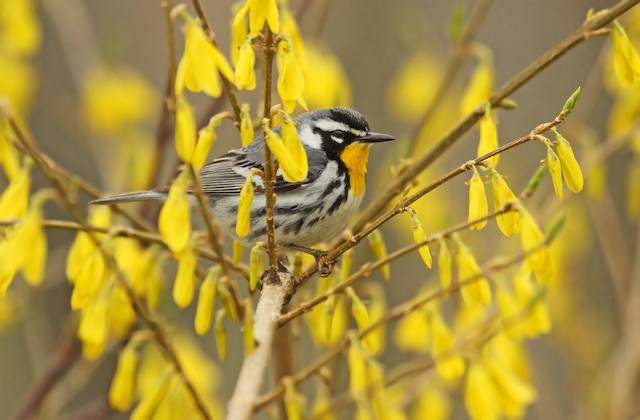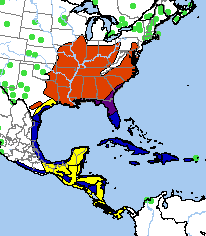Birdfinding.info ⇒ Common during the breeding season in heavily wooded areas across much of the eastern U.S., especially in the Ozarks, the Ohio Valley, the mid-South, and the coastal plain from Chesapeake Bay to northern Florida (see Breeding Bird Survey Abundance Map in Notes, below). Common in winter throughout Florida, the Bahamas, the Greater Antilles, and the coastal plain of eastern Mexico.
Yellow-throated Warbler
Setophaga dominica
Breeds in the eastern U.S. Winters from the southeastern U.S. to Central America and the West Indies.
Breeding. Forests of various kinds, mainly pine and mixed hardwoods, often in creek valleys, floodplains, or bottomland swamps, across most of the eastern U.S. north to southern Wisconsin, southern Michigan, western New York, and New Jersey, south to central Florida, and west to south-central Texas (Edwards Plateau).
Nonbreeding. Winters in all kinds of woodlands, swamps, gardens, and scrub from coastal South Carolina and the U.S. Gulf Coast south through the West Indies to Puerto Rico, and on the continent through eastern and southern Mexico south to Costa Rica, rarely to central Panama.
Stragglers often overwinter farther north in the breeding range and west across Mexico and the southwestern U.S.
Movements. Migration periods are prolonged. Spring migrants begin appearing on southern breeding grounds in early March and arrivals in northern areas continue into May. Fall migration begins in early July and lasts through October.
Spring overshoots regularly appear far to the west and north of the breeding range, especially in Minnesota, Ontario, and New England. Fall vagrants appear throughout the western U.S., the Canadian Maritimes, and on Bermuda.
Identification
Boldly marked with contrasting black, gray, white, and a bright yellow throat and upper chest. All plumages share the same conspicuous features, with only minor variations among males, females, adults, and immatures.
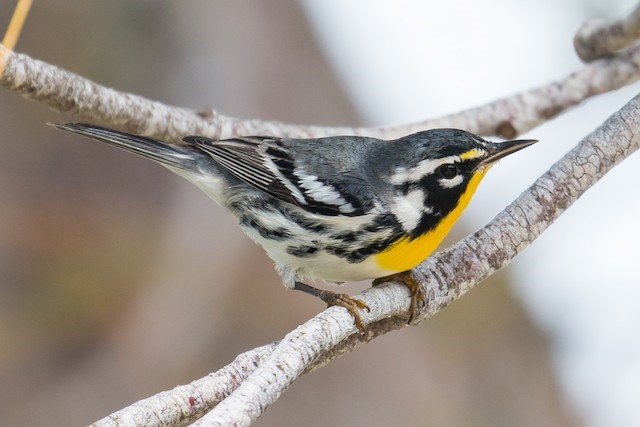
Yellow-throated Warbler. (Parque Ecológico Kai Luum, Mérida, Yucatán, Mexico; November 26, 2016.) © Patrick V.
The upperparts are mostly slate-gray, with two broad white wingbars. The underparts are mostly white, with heavy black streaks on the sides.

Yellow-throated Warbler, S. d. albilora. (Roloff Park, Laguna Vista, Texas; November 11, 2018.) © Robert Clark
Distinctive facial pattern is dominated by a large triangular black mask that extends across its cheeks and onto its neck, framed by a broad white eyebrow, a large white patch on the side of the neck, and a bold white crescent below the eye.

Yellow-throated Warbler, S. d. albilora. (Curry Hammock State Park, Marathon, Florida; September 15, 2015.) © Ted Keyel
The western subspecies, albilora (sometimes known as the “Sycamore Warbler”), usually has an entirely white brow, whereas on the two eastern subspecies the brow is yellow in front of the eye. However, some “Sycamore Warblers” also show some yellow in front of the eye.
The eastern subspecies, dominica and stoddardi, usually have somewhat longer bills than albilora, but this feature also varies.

Yellow-throated Warbler, S. d. albilora. (Fabyan West Forest Preserve, Geneva, Illinois; May 6, 2016.) © Ken Schneider
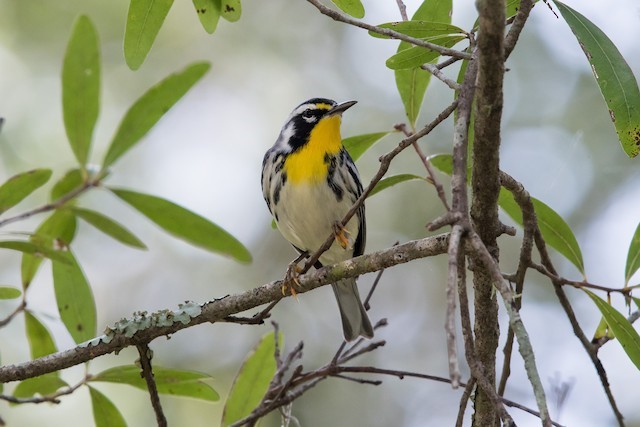
Yellow-throated Warbler, S. d. dominica. (John Chestnut Sr. Park, East Lake, Florida; October 21, 2017.) © Melissa James
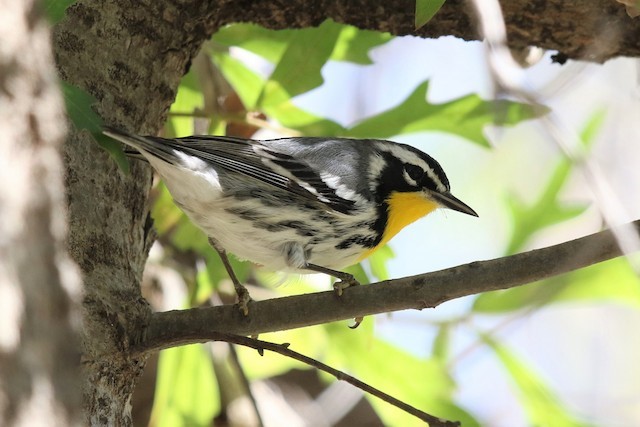
Yellow-throated Warbler, S. d. albilora. (Bear Creek Park, Houston, Texas; December 11, 2017.) © Bob Friedrichs
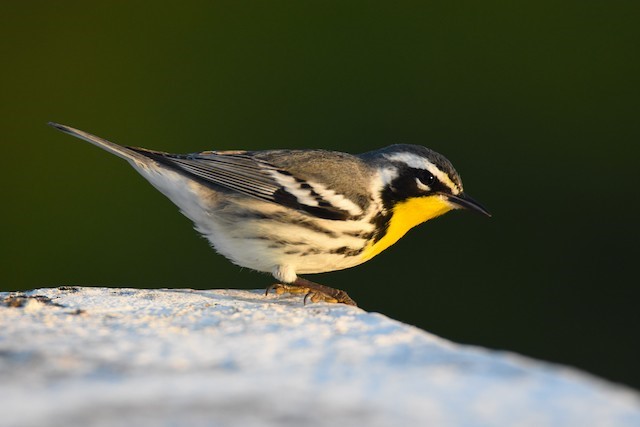
Yellow-throated Warbler. (Cozumel, Mexico; December 29, 2016.) © Luke Berg

Yellow-throated Warbler, S. d. dominica. (Central Winds Park, Winter Springs, Florida; August 10, 2017.) © William Rivera

Yellow-throated Warbler, S. d. dominica. (Susquehanna State Park, Maryland; April 10, 2014.) © Mark R. Johnson

Yellow-throated Warbler, S. d. albilora. (Commons Ford Ranch Metropolitan Park, Austin, Texas; May 8, 2018.) © Isaac Sanchez
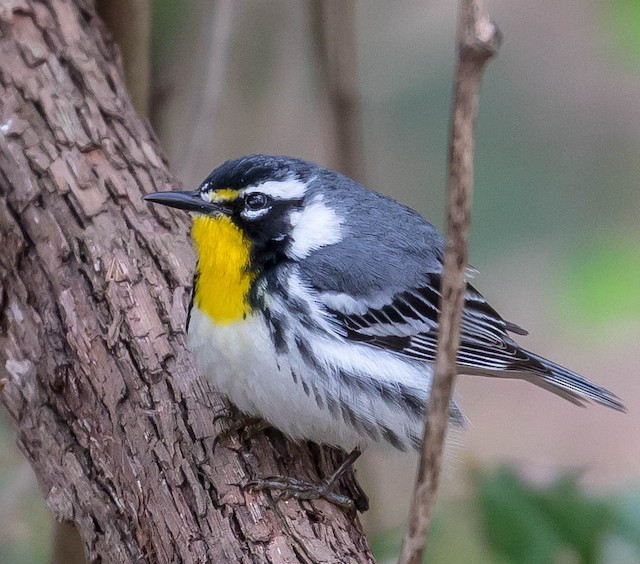
Yellow-throated Warbler, S. d. dominica. (R. Garland Dodd Park at Point of Rocks, Hopewell, Virginia; April 16, 2018.) © Bill Wood

Yellow-throated Warbler, S. d. dominica. (Okefenokee National Wildlife Refuge, Georgia; March 18, 2017.) © Donald Thompson
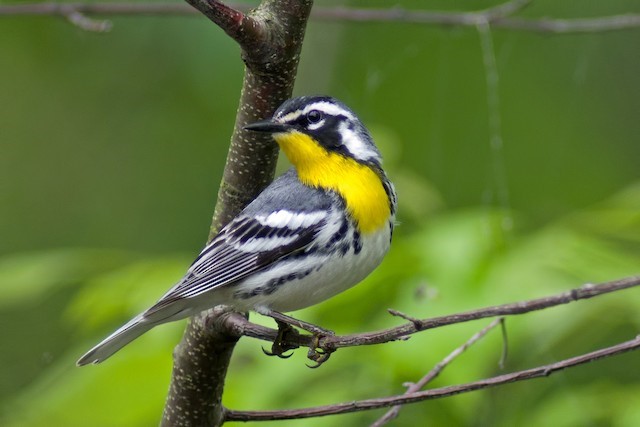
Yellow-throated Warbler, S. d. albilora. (Lower Trail, Alexandria, Pennsylvania; June 4, 2016.) © Rob Dickerson

Yellow-throated Warbler, S. d. dominica—note long, slightly decurved bill. (Little St. Simons Island, Georgia; May 5, 2018.) © Ian Davies
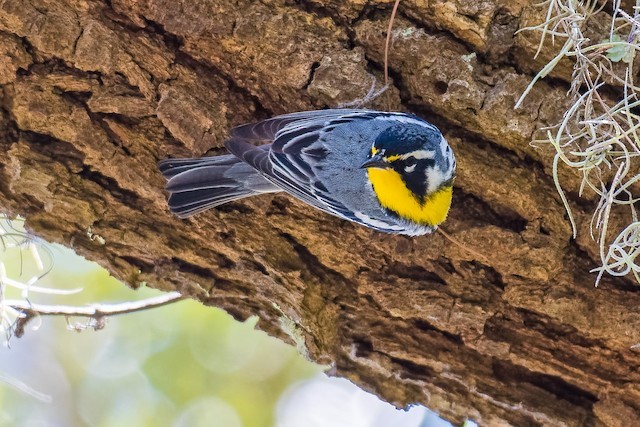
Yellow-throated Warbler, S. d. dominica, dorsal view. (Jekyll Island, Georgia; April 28, 2018.) © Don Danko
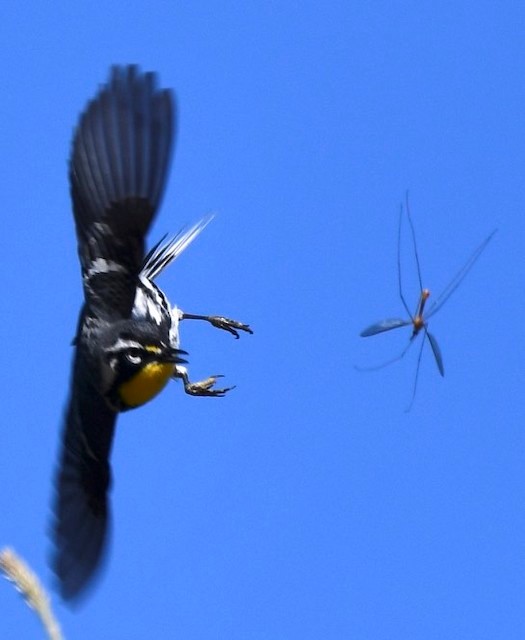
Yellow-throated Warbler, S. d. dominica, pursuing a crane fly. (Scull Shoals Experimental Forest, Wrayswood, Georgia; April 17, 2018.) © Christine Kozlosky

Yellow-throated Warbler, S. d. dominica, likely immature—note somewhat indistinct facial markings. (Merkle Wildlife Sanctuary, Dunkirk, Maryland; July 23, 2017.) © Sam Miller

Yellow-throated Warbler. (Eden, North Carolina; May 4, 2018.) © Martin Wall
Cf. Bahama Warbler. In the northern Bahamas, Yellow-throated Warbler overlaps with the closely related Bahama Warbler. The two are very similar in pattern and coloration, but differ structurally, as Bahama has an exceptionally long, slightly down-curved bill and a long tail. Their behaviors also differ, as Bahama Warbler has a strong tendency to forage like a creeper, sticking to trunks and large branches, probing the bark.
Notes
Polytypic species consisting of three recognized subspecies: dominica, stoddardi, and albilora. The latter, sometimes known as the “Sycamore Warbler,” is often considered a distinct form.
The Bahama Warbler was traditionally considered a subspecies of Yellow-throated.
References
Alderfer, J., and J.L. Dunn. 2014. National Geographic Complete Birds of North America (Second Edition). National Geographic Society, Washington, D.C.
Dunn, J.L., and K.L. Garrett. 1997. A Field Guide to Warblers of North America. Houghton Mifflin, Boston.
eBird. 2019. eBird: An online database of bird distribution and abundance. Cornell Lab of Ornithology, Ithaca, N.Y. http://www.ebird.org. (Accessed April 6, 2019.)
Fagan, J., and O. Komar. 2016. Peterson Field Guide to the Birds of Northern Central America. Houghton Mifflin Harcourt, New York.
Garrido, O.H, and A. Kirkconnell. 2000. Field Guide to the Birds of Cuba. Cornell University Press, Ithaca, N.Y.
Garrigues, R., and R. Dean. 2014. The Birds of Costa Rica: A Field Guide (Second Edition). Cornell University Press, Ithaca, N.Y.
Haynes-Sutton, A., A. Downer, R. Sutton, and Y.-J. Rey-Millet. 2009. A Photographic Guide to the Birds of Jamaica. Princeton University Press, Princeton, N.J.
Howell, S.N.G., and S. Webb. 1995. A Guide to the Birds of Mexico and Northern Central America. Oxford University Press, Oxford.
Latta, S., C. Rimmer, A. Keith, J. Wiley, H. Raffaele, K. McFarland, and E. Fernandez. 2006. Birds of the Dominican Republic and Haiti. Princeton University Press, Princeton, N.J.
Raffaele, H. 1989. A Guide to the Birds of Puerto Rico and the Virgin Islands. Princeton University Press, Princeton, N.J.
Raffaele, H., J. Wiley, O. Garrido, A. Keith, and J. Raffaele. 1998. A Guide to the Birds of the West Indies. Princeton University Press, Princeton, N.J.
